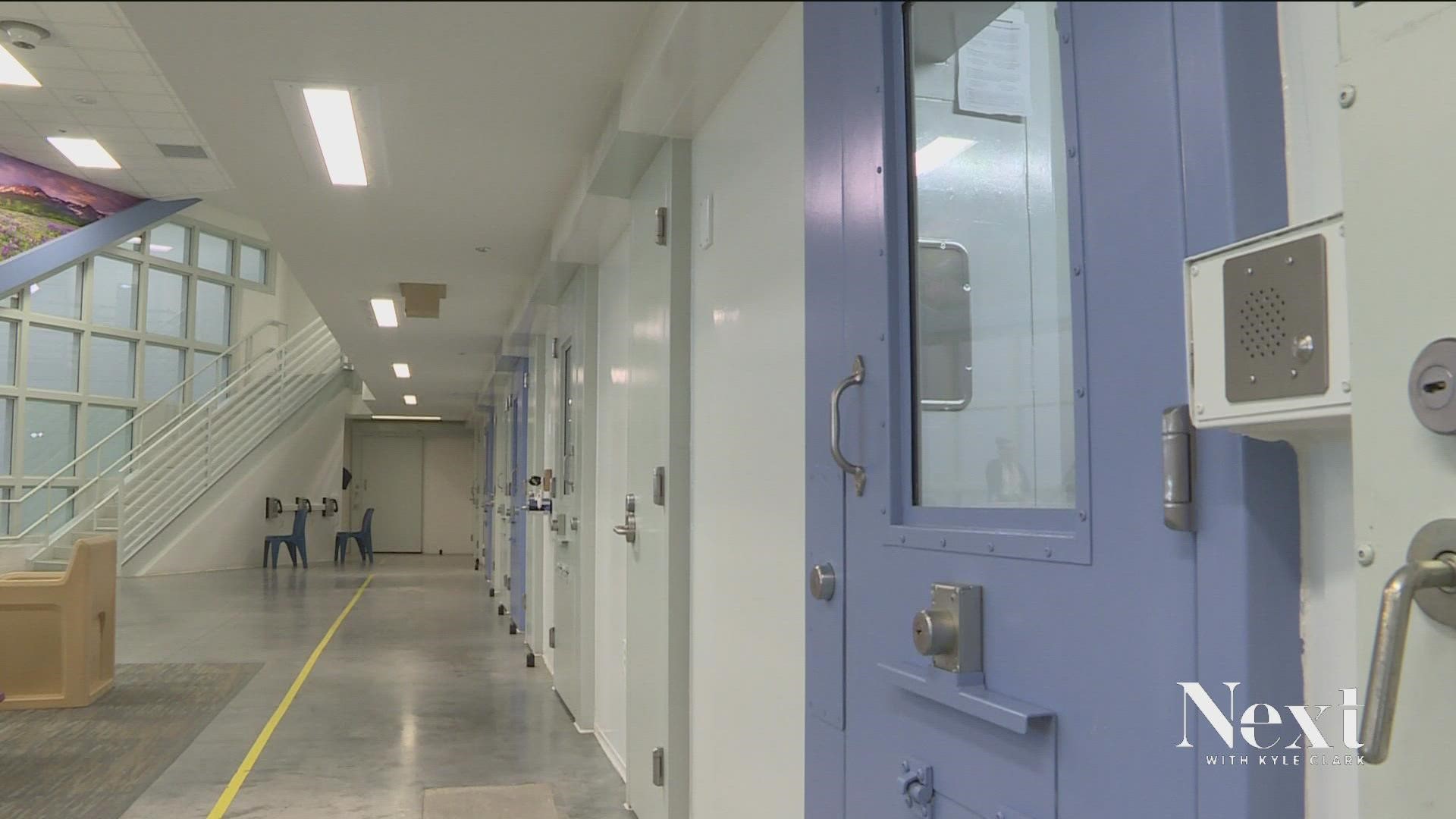DENVER — The Denver sheriff's office spent millions of dollars to renovate the jail, specifically the area where women are housed. They're changing the lighting, repainting it in different colors and planning on removing bars from the windows. The sheriff said he hopes this will make an impact for generations to come.
Here is a part of our conversation.
What are the changes?
The common area for Building 24 now has tables with built in games, books, a mural, a place to watch TV. The hallways are bright and airy. The paint job is softer, Sheriff Elias Diggins said.
The cells have side by side beds, instead of bunk beds, with dedicated areas for each woman to study and keep their things.
The project cost $8.8 million that is funded through tax dollars from the general fund budget.
The next step is to remove the bars found on the windows on the sixth and seventh floors.
The idea is to make the area where women are housed feel less punishing and more normal, according to Diggins.
Why make these changes?
"Nationally there's a movement to change the philosophy behind what we see as incarceration," Diggins said.
"Female individuals in the criminal justice system have a significant amount of trauma," added Chief of Mental Health Services Dr. Nikki Johnson. Being in a locked down, harsh environment can make it harder for people to be open to receiving help but changing the environment can make a difference.
"[We're] hoping to see less recidivism," Johnson said.
Both Johnson and Diggins said they want to see people avoid re-offending and ending up back in jail.
Most of the people housed in Building 24 are lower-level offenders. That includes things like some drug and traffic offenses.
Diggins said many people in custody also have mental health conditions or are dealing with substance use disorders, so it's important to him to set up an environment where people are more comfortable and open to receiving help.
Are there long-term impacts?
The focus is on the women and putting them in a better position when they're released because of their children. Diggins said when a mom is incarcerated, kids end up with family or the Department of Human Services gets involved. The challenges they face can impact them for years.
"The propensity for a child who has a mother in custody is to become a second generation in the criminal justice system is statistically higher," he said.
For those who wonder why the city is spending all this money on those who've broken the law, Diggins said it's because most won't stay here forever.
"97% [of people who] come into custody come back," he said. "How would you want them to be treated while in our custody?"
"The loss of freedom is their punishment. The punishment is not to make the jail setting more traumatizing," Johnson said. "Making a jail more traumatizing, we are going to see that impact in the community. [It's] important to us to return individuals back to the community safely, where they can be a productive citizen and not return to the jail."
Jails, including Building 24, were originally designed for men, but Diggins said over the years more women have been incarcerated. He said he was hearing from the community, and his own staff, suggestions to change the environment for the benefit of everyone.
They hope to eventually make the same changes for the men's side as well.
Since making the changes, Diggins said they've seen fewer fights in Building 24.
They said with more space to spread out there is less tension, which is safer for both staff and inmates. Jail overcrowding is an on-going issue. Diggins said he hopes by investing in these changes now, it will reduce the jail population in the long run.
SUGGESTED VIDEOS: Next with Kyle Clark

